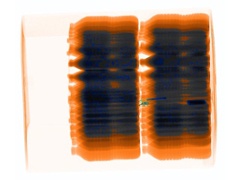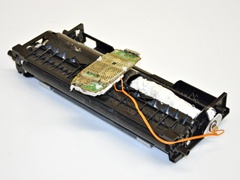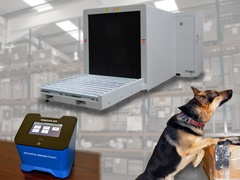 Air cargo has always been a target for those wanting to cause harm to the transport industry. One of the ways they’ve done that is by concealing explosive devices into air freight on both cargo and passenger aircraft. Unfortunately, successful attempts have led to catastrophic consequences including severe damage to airline assets, disruption of the industry, and loss of life.
Air cargo has always been a target for those wanting to cause harm to the transport industry. One of the ways they’ve done that is by concealing explosive devices into air freight on both cargo and passenger aircraft. Unfortunately, successful attempts have led to catastrophic consequences including severe damage to airline assets, disruption of the industry, and loss of life.
That’s why air cargo screening remains an imperative step in maintaining security. Without it, the industry would be incredibly vulnerable to explosive threats. Proper diligence must be exercised to protect the air cargo industry, the people working in it, and those utilizing its services.
The Explosive Threat
 Explosive threats can come in many forms and range in its power. A single device packing a powerful punch of explosives placed in the right location can take down an aircraft in an instant.
Explosive threats can come in many forms and range in its power. A single device packing a powerful punch of explosives placed in the right location can take down an aircraft in an instant.
Generally, these improvised explosive devices (IEDs) concealed within air cargo require four main components – the power source, initiator, explosive, and switch. The power source provides an electrical charge to the initiator. The initiator contains a small amount of explosive material to trigger the rest of the explosives. The switch (or timer) tells the initiator when to set off the whole IED. The container holding the explosive device is sometimes considered the fifth component.
Concealment Techniques
 Current concealment techniques have not been to simply place explosive devices among items, but to meticulously conceal all IED components inside an everyday item to camouflage its position. Depending on the make-up of the device’s components, some may try to disguise their IED within solid, dense items such as heavy machinery. Others may try to disguise their device within electronics to blend in any wiring they have used. To the untrained eye, concealed explosive threats are very difficult to detect.
Current concealment techniques have not been to simply place explosive devices among items, but to meticulously conceal all IED components inside an everyday item to camouflage its position. Depending on the make-up of the device’s components, some may try to disguise their IED within solid, dense items such as heavy machinery. Others may try to disguise their device within electronics to blend in any wiring they have used. To the untrained eye, concealed explosive threats are very difficult to detect.
One prominent example of a well-concealed IED was discovered within the printer cartridge of a small office printer traveling from Yemen to the U.K. on a cargo plane. In a recent plot, authorities discovered a homemade bomb concealed within a commercial meat-grinder in cabin baggage at Sydney Airport.
Detection Methods
 There are a handful of air cargo screening methods used to detect explosives. Mainly, explosive detection canines, explosive trace detection (ETD) technology, and advanced X-ray systems are deployed to the operational environment.
There are a handful of air cargo screening methods used to detect explosives. Mainly, explosive detection canines, explosive trace detection (ETD) technology, and advanced X-ray systems are deployed to the operational environment.
Detection dogs alert their handlers to minute traces of explosive concealed in and around airfreight. Canines undergo rigorous training before being deployed and receive regular training to maintain effectiveness.
Explosive Trace Detection technology can also detect minute amounts of explosive by collecting a swab sample from packages and pallets. ETD units analyze the sample to determine if particles indicative of explosive material exist.
In contrast to detection canines and ETD technology, advanced X-ray systems allow screeners to see into scanned cargo. Using shapes, color, density, and placement of items, experienced screeners can identify areas or objects of concern and may even be able to detect all parts of an assembled explosive device.
Conclusion
When the strategy of terrorists is to cause maximum fear with minimal effort, they tend lean toward the use of explosive devices to cause destruction and disruption. This is why all members of the air cargo industry must work toward the common goal of achieving effective air cargo screening.
